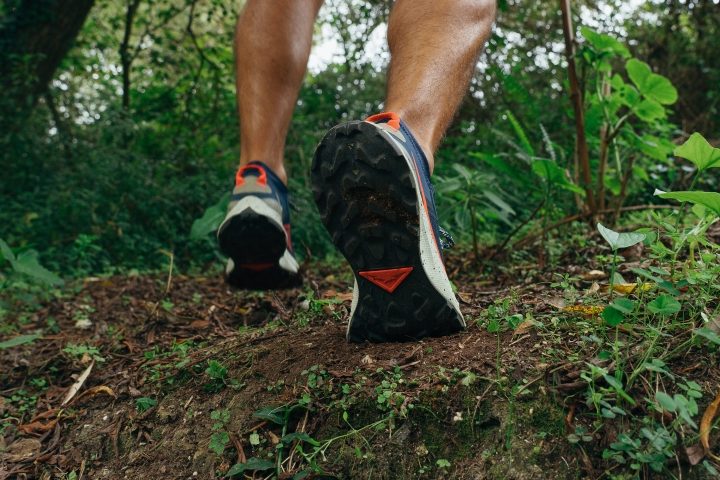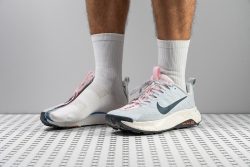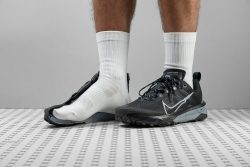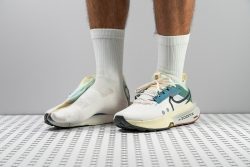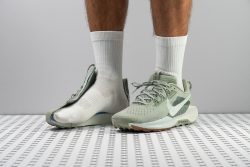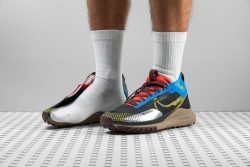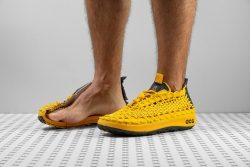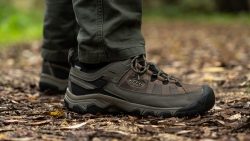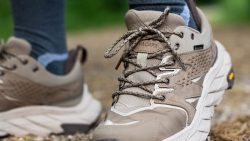6 Best Nike Hiking Shoes in 2025

We buy shoes ourselves. We earn commissions when you buy through us, at no extra cost. Why trust us
If your next hikes involve summiting mountains and encountering technical terrains, shallow streams, and shrubberies, you may need a reliable pair of hiking shoes. If you’re out searching for the right fit, consider the All Conditions Gear (ACG) hiking shoes from Nike, which can double for urban hiking and outdoor adventure.
From waterproof ACG models to lightweight trail kicks, the Nike hiking shoes have gained the trust of many when it comes to great quality, reliability, and comfort. The Swoosh offerings in the hiking category include the Nike ACG Air built for the great outdoors with an emphasis on comfort, protection, and style.
After field testing all the shoes in our inventory and sifting through the data, we then rank all the best Nike hiking shoes and provide you with our in-depth reviews. Check them all out below.
How we test Nike hiking shoes
For this guide, our in-house hiking experts put in the legwork and trekked with each pair of Nike shoes on a range of terrains and murky trails. We also analyse the technologies and the quality of materials used for all the footwear on the list.
Our procedure includes doing the following steps:
- Purchase the Nike hiking shoes from our own pocket. This safeguards our complete freedom and impartiality when giving our assessments and publishing our reviews.
- Wear each Nike model on actual hikes and backpacking trips to get a real-world feel of the fit, comfort, ankle stability, waterproofness, outsole traction, heel protection, and many more.
- Subject all the Nike shoes further to the grind of multi-day hikes, tackling tougher terrains and the inclement weather.
- We also showcase Audience score which reflects how other testers and enthusiasts feel about the shoe in question.
Best Nike hiking shoes overall
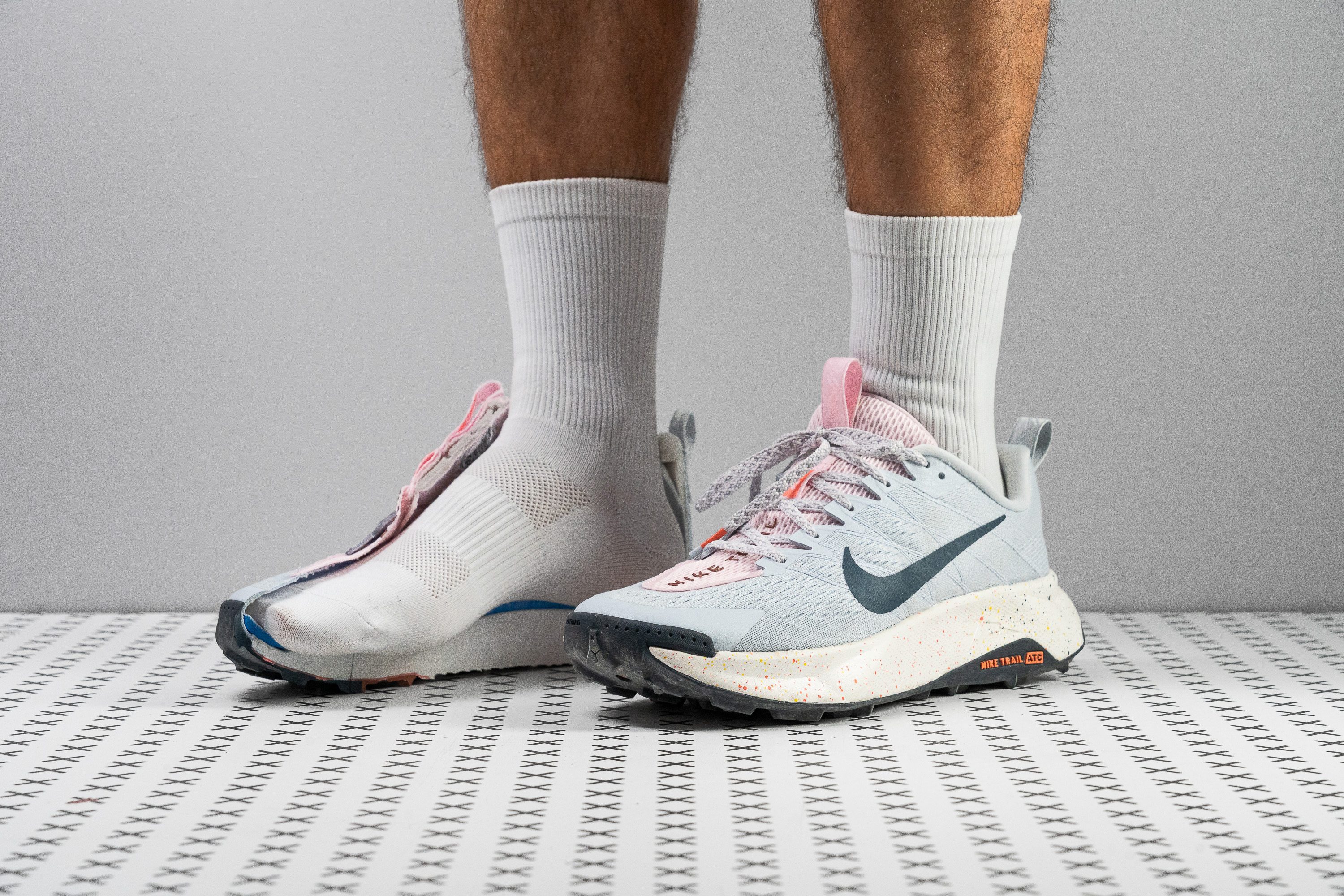










































What makes it the best?
With an ideal blend of strong shock absorption, energy return, and stability, the Nike Wildhorse 10 made our outdoor adventures so much more effortless and enjoyable. Our lab tests validate its next-level cushioning and wide platform for surefootedness, making it our best Nike hiking shoe.
We could stay out on the trails all day because we had bottomless cushioning beneath our feet. Our calliper shows a very tall 38.3/27.4 mm stack height, which feels even more comfortable on foot because of its gentle landings. In our shock absorption test, we validated that it does reduce landing impact much more than average. To put it in figures, the heel and forefoot recorded 144/105 SA vs. the 120/97 SA average.
What made our hikes livelier is the bouncy cushion that sprang us off with every step. True enough, our energy return test shows the heel returned an impressive 61.3% score.
To offset its height and enhance a well-planted sensation, Wildhorse 10 features a wide 120.6/93.8 mm platform. We had more room than the 112.4/89.5 mm average to firmly secure our footing.
Its toebox offers lots of room, too, but because shoes are not one size fits all, we can’t recommend this pair to those with narrow feet who like a secure fit.
Pros
- Cushion-packed midsole
- Modernised upper
- Ideal for heel strikers
- Better build quality
- Bold new look with better finish
- Versatile
- Improved energy return
- Forefoot rock plate
- Forefoot rock plate
Cons
- Still too heavy
- Mesh upper is fragile
- Brutal price hike
- Less agile than predecessors
Best lightweight Nike hiking shoes
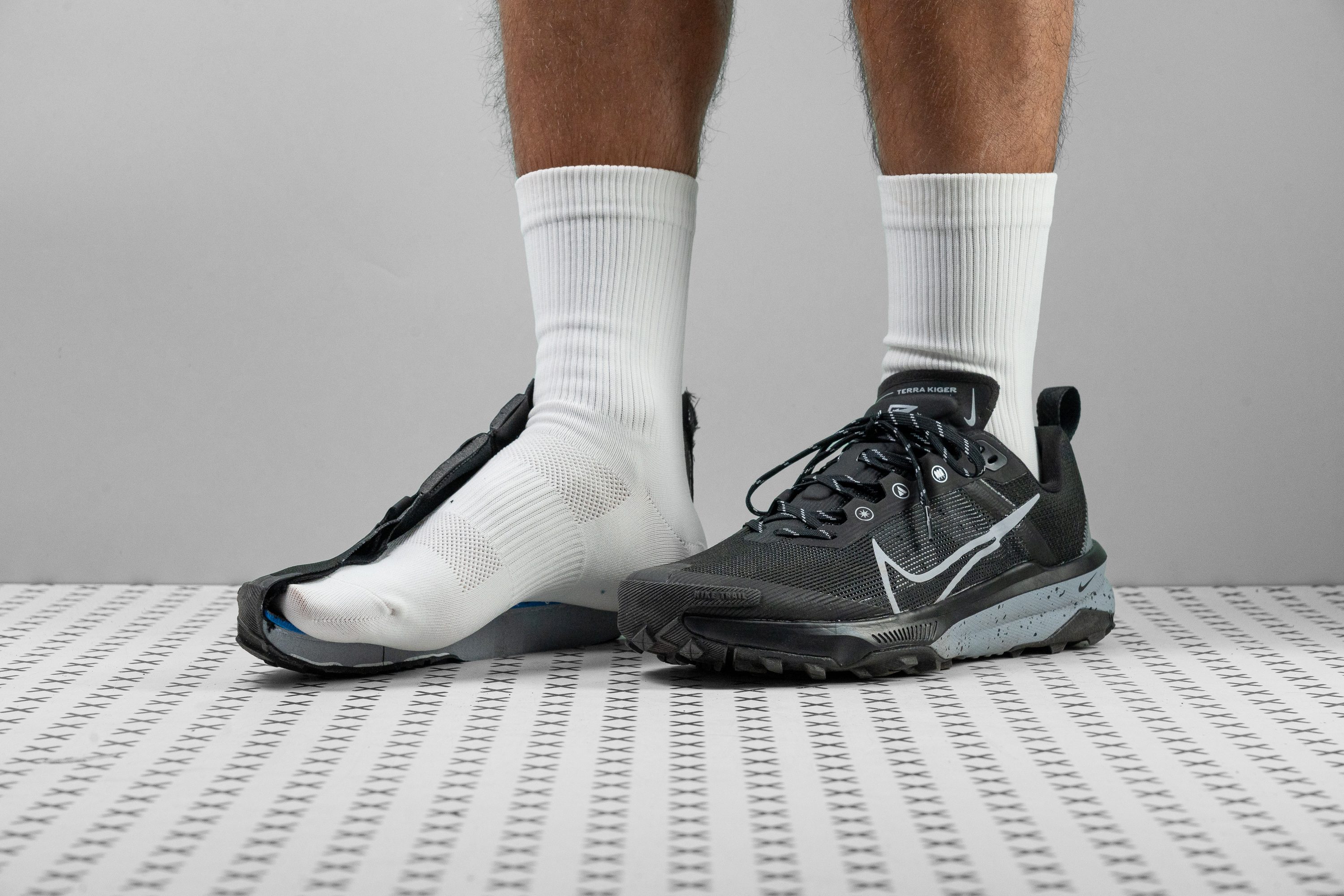






































What makes it the best?
The latest edition of the Nike Terra Kiger range features numerous updates which make it a superb choice for hiking and trail running alike. The unbelievable plush midsole is offset by exceptional stability, all the while shaving off the extra grammes. This is why the Nike Terra Kiger 9 can rightfully claim its spot as the best lightweight Nike hiking shoe.
The Nike Terra Kiger 9 has been on a strict diet when compared to the previous iterations! Our scales noted a superbly lightweight 10.2 oz (288g), 9% lighter than the Kiger 7. When compared to the average hiking shoe, which weighs 13 oz (374g), we see that this is indeed a lightweight shoe. The result for our feet is putting in more miles per day before they get tired.
The React foam cushioning offers a soft ride that is unrivalled in comfort, and it is always a delight to slip into these shoes. Our durometer measured the softness of the midsole at a stunning 17.3 HA! For reference, the average hiking shoe midsole is a significantly harder 30.7 HA. As a bonus, in our lab-simulated winter conditions (i.e. a freezer), the midsole only hardened up to 22.9 HA. This cushy ride keeps our feet comfortable all day on the trail, whether it’s warm or cold out.
With such a soft midsole, stability can be a cause for concern, but the Nike Terra Kiger 9 refuses to compromise. In the lab, we measured the width of the forefoot at 115.3 mm, a full 4.1 mm wider than average. The heel, too, is 2.2 mm wider than average, at 89.9 mm. Combined, they make for a wide landing surface which provides stability and prevents our feet from rolling, even when hiking over rocks and roots.
Although the 4.4 mm lugs are around average for hiking shoes, we found that the Nike Terra Kiger 9 doesn’t perform well on soft terrain such as mud or snow. We therefore don’t recommend them to hikers who need a shoe with reliable traction for wet, soft surfaces.
Pros
- Bouncy and durable React foam
- Excellent grip on dry terrain
- Built-like-a-tank upper
- Adequate cushioning for long runs
- Fantastic choice for wide feet
- No heel slippage
- Light and agile
- Remarkable value at $150
- Outstanding choice for forefoot strikers
Cons
- Subpar grip performance on wet terrain
- Could be more stable
Nike hiking shoes with the best shock absorption
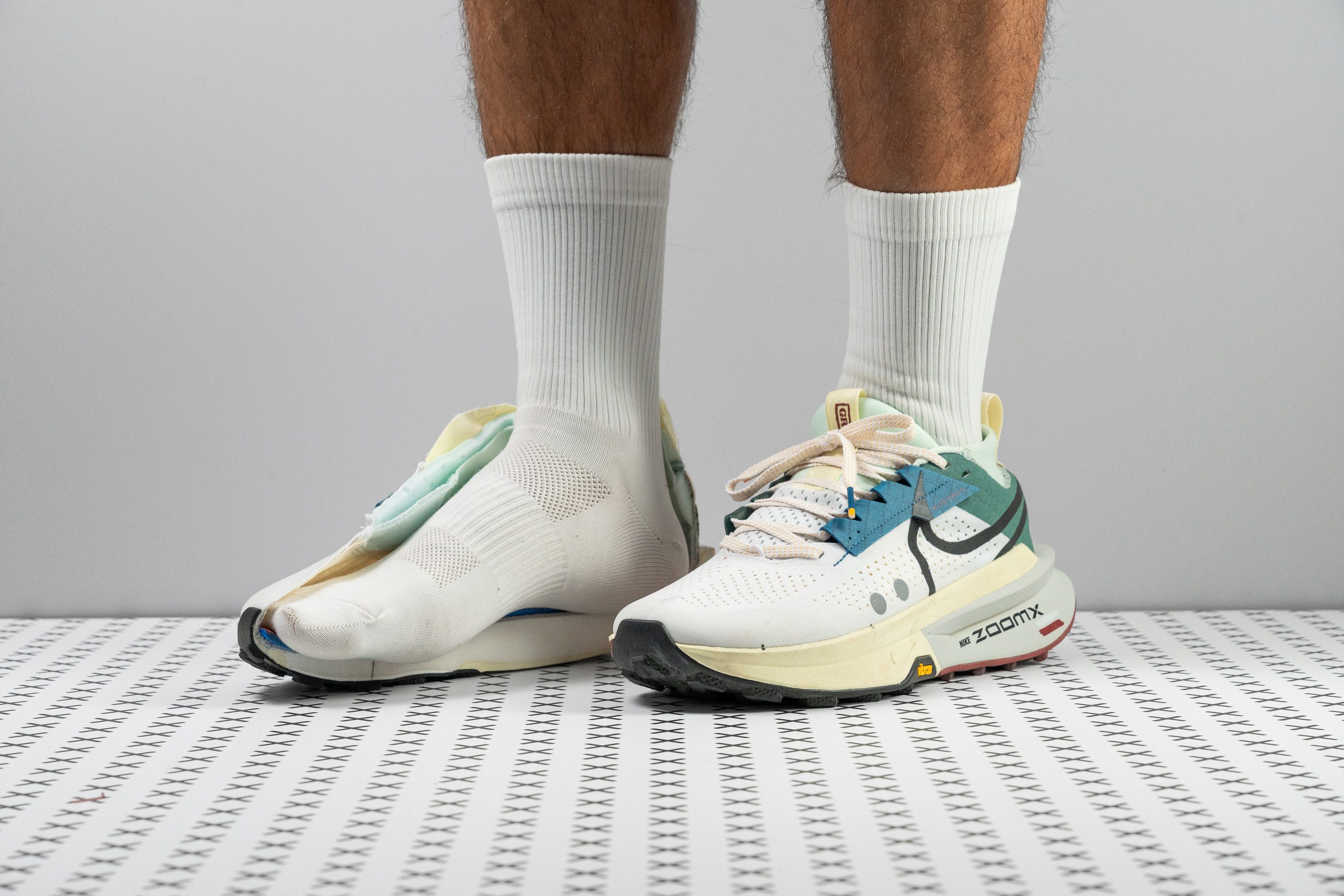

























































What makes it the best?
Our top pick for shock absorption among Nike hiking shoes is wholeheartedly the Zegama 2. Our feet couldn’t deny its plush ZoomX midsole that filled our outdoor adventures with relief and joy. Our lab shows a well-balanced upper and a reliable Vibram Megagrip outsole, making it a consistent performer across diverse terrains.
The cushioning feels plush and springy, with smooth transitions enhanced by its rocker geometry. Our lab test confirms its exceptional impact protection, with a high 130 SA rating, which means 8.3% better shock absorption than average. The shoe’s flexibility also boosted comfort, as it emerged 21.0% more bendable than average in our 30-degree test.
The Vibram Megagrip outsole includes deep 4.0 mm Traction Lugs, which relentlessly gripped any kind of surface we tested. It also shows impressive abrasion resistance against our Dremel, performing better than average.
Even the toebox managed to get a remarkable 4/5 durability score while maintaining excellent airflow. Our smoke test confirms its breathable nature with a 4/5 rating.
Unfortunately, Zegama 2 failed to impress us in the weight department. At 10.7 oz (302g), we found it too heavy for its below-average stack.
Pros
- More ZoomX bouncy foam!
- Vibram Megagrip outsole
- Spacious upper
- Exceptional durability
- Superb wet condition traction
- Ideal for midfoot and forefoot strikers
- Ready for long-distance running
- Suitable for hiking too
Cons
- Could be lighter
- Not ideal for heel strikers
- Limited toebox vertical space
Best Nike hiking shoes for trail and city
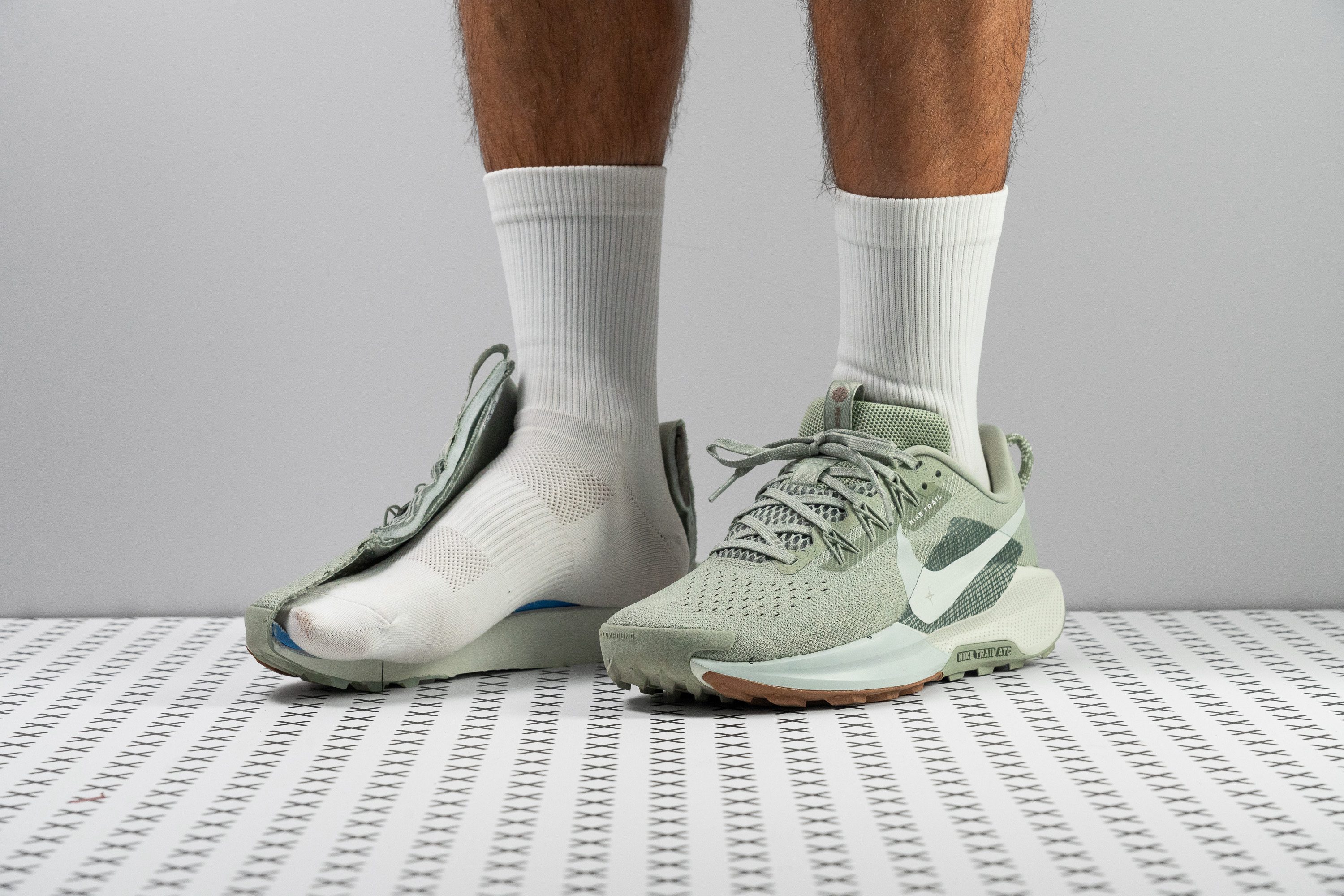






















































What makes it the best?
We found the Pegasus Trail 5 as an ideal hybrid shoe because of its well-balanced cushion and robust outsole that has both traction and strength for mixed surfaces. It feels so light on foot and adapts seamlessly to our movement that we forget we’re even wearing them! Backed up by lab results, it’s our top Nike hiking shoe for the trail and city.
The Pegasus Trail 5 also doubles as a trail running shoe which explains its highly-cushioned and responsive feel. Carrying the ReactX foam, our durometer shows it’s 51.1% softer than average.
The All-Terrain Compound outsole represents its name well both in and out of the lab. Our durometer shows it’s a tough 87.9 HC, while extensive testing barely caused any wear. In terms of grip, the 3.2 mm lugs made us feel secure on soft ground without feeling too bulky on asphalt and concrete.
The Pegasus Trail 5’s versatility can be attributed to its light and flexible build. At 10.1 oz (286g), we felt highly agile and could easily adjust to different environments. Our bend test confirms the midsole is 30.8% more flexible than average, explaining its natural feel.
If only this shoe was an all-weather friend. We found the upper too dense for hot weather, as reflected by its low 2/5 breathability score. We don’t recommend this pair for summer hiking.
Pros
- Fully gusseted tongue
- Reflective elements
- Durable upper construction
- New rockered sole
- Great for heel strikers
- Reasonably priced
- All-around comfort
- All-around comfort
Cons
- Weight increase
- Possibly too plush for trails
- Still lacks traction
Best waterproof Nike hiking shoes
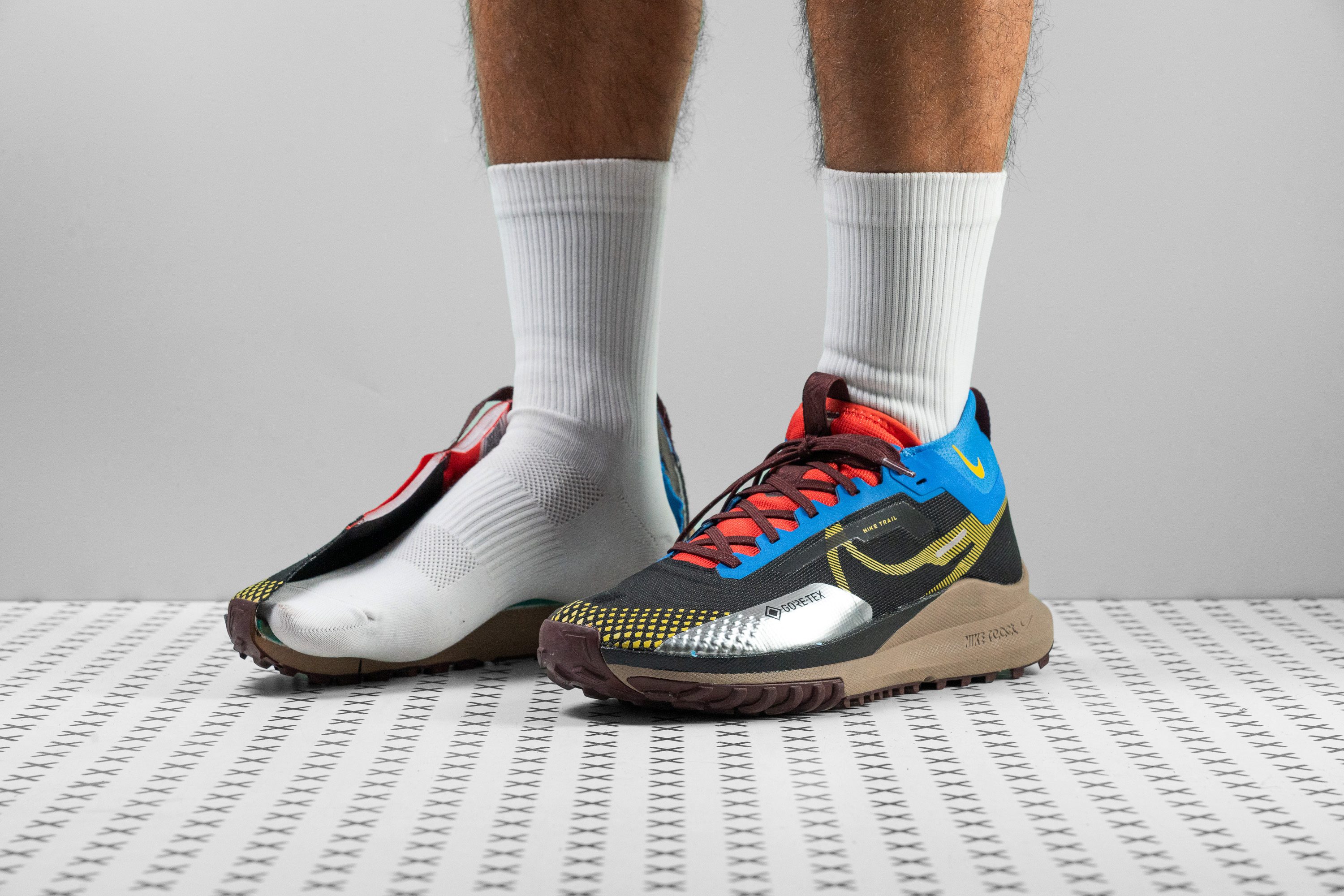



















































What makes it the best?
Our splash adventures in the mountains and deep analysis in the lab led us to Nike’s best waterproof hiking shoe: Pegasus Trail 4 GTX. Its extremely protective nature, from top to bottom, kept us safe from all unwanted elements—wet feet, fatigue, and slips and injuries.
Starting from the top, the Gore-Tex membrane’s waterproofing function is further supported by the several TPU layers we found upon dissecting the shoe. With its 2/5 breathability rating, we're shielded from cold and moisture, while the outsole's durability shines in our Dremel test, earning an impressive 4/5 score against premature wear.
Moving to the middle layer, a snappy yet silky React foam greets us. It feels pleasantly gentle and energetic underfoot. Our calliper reveals a 37.7 mm heel for maximum impact protection, with a composition that’s 29.3% lighter than average for comfort. Extending our hikes was a breeze with Peg’s supportive platform.
Underfoot, the outsole lined with 3.5 mm lugs does the tough job of keeping our strides controlled and stable. It displays unquestionable grip on mixed terrains, wet surfaces, and even steep descents, ensuring our safety on any path.
However, the Peg’s waterproofing is only effective up until a certain point: the ankles. Beyond that, water will creep in since the tongue isn’t fully gusseted.
Pros
- Versatile road-to-trail performance
- Grippier than the standard version
- Surprisingly light for a GTX shoe
- Accommodates wide feet with ease
- Delivers a really stable ride for neutral runners
- Upper showcases remarkable durability
- Fantastic option for heel strikers
Cons
- Non-gusseted tongue allows water and debris to enter the shoe
- Not suitable for technical terrain
- Excessive drop for midfoot or forefoot strikers
Best Nike shoes for water hiking
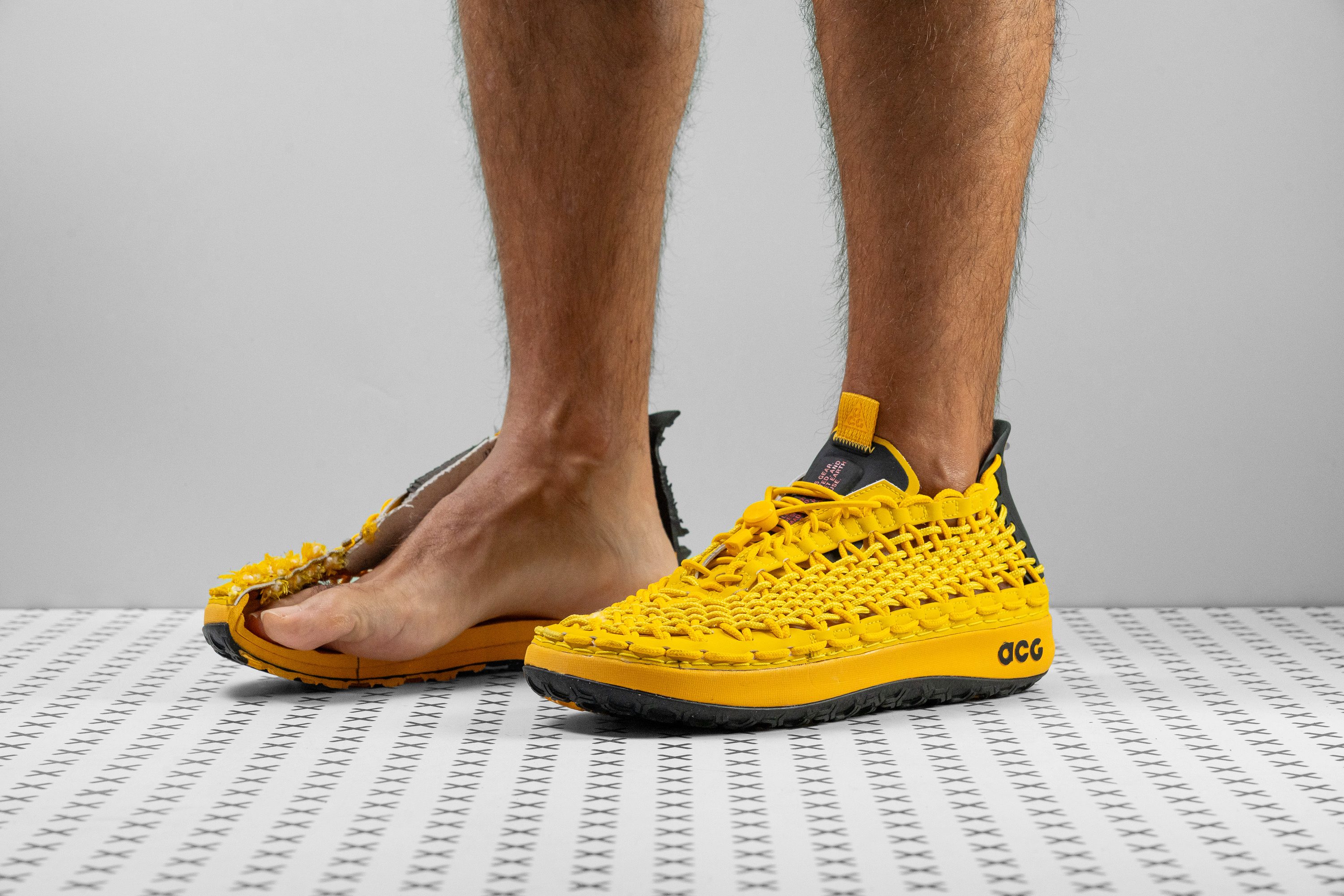














































What makes it the best?
There’s only one shoe in the Nike line that is best for water hiking and that’s the Nike ACG Watercat+. Highly breathable and quick-draining, it has incredible grip and is superbly comfortable, making it the perfect choice for waterside adventures.
Just one look at the Nike ACG Watercat + and we can see that it’s one of the most breathable shoes in the Nike lineup, not to mention to have passed through our lab. The extremely durable woven cord upper allows for maximum breathability and drainage. It's soft and pliable, allowing for a range of foot shapes. After splashing through streams on our test hikes, the water drains out through both the woven upper and the holes poked through the midsole. The cord dries rapidly, allowing our feet to remain dry and blister-free. This shoe is certainly an excellent choice for repeated soaking!
Our lab measurements of the ACG Watercat+ lugs show that they are smaller than average by 1.3 mm. However, their multi-directional, honeycomb design eliminated our concerns. They grip well on all surfaces, especially wet rock, where the hollow lugs act as suction cups.
Despite its minimalist design, the Nike ACG Watercat+ is an impressively comfortable and responsive underfoot. We are particularly impressed with the midsole, offering a high energy return rate of 57.0%, making the ride much livelier.
We don’t recommend the Nike ACG Watercat+ to hikers who require lots of ankle and arch support. It rated 1/5 in our manual tests for torsional flexibility, and while this makes it a seriously flexible shoe, hikers needing more support may prefer to look at other options.
Pros
- Outstanding water drainage
- Immensely breathable
- Excellent abrasion resistance
- Very light on foot
- Amazingly grippy on wet
- Very grounded platform
- Bends along with the foot
- Adaptable fit with a roomy toebox
- Easy on-and-off
- Comfy in-shoe feel
- Bold aesthetics
Cons
- No arch or ankle support
- Catches debris and small pebbles easily
Nike has been a powerhouse in the footwear industry since the beginning of time. Or at least it feels that way. That’s because Nike has continually designed, tested, and manufactured purpose-built footwear for a wide selection of activities, like performance footwear for sports, running shoes, and everyday shoes for everyday errands.
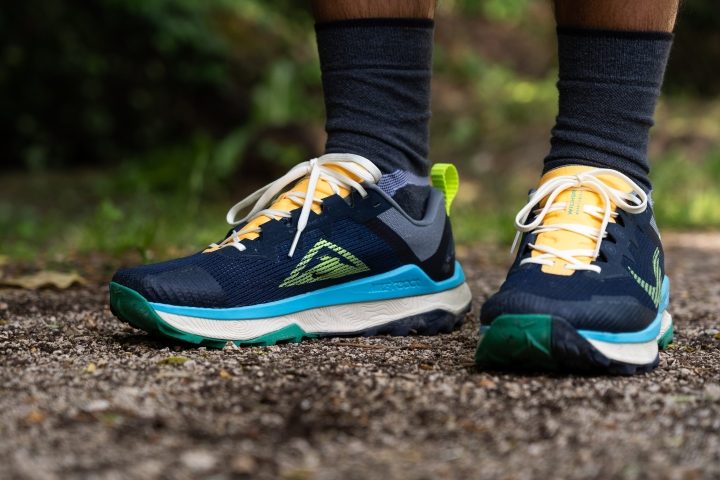
So it wasn’t surprising when Nike entered into the outdoor footwear industry. As you’d expect Nike’s lineup of hiking shoes seems to making customers happy.
Nike “All Condition Gear” Shoes
Nike All Condition Gear (ACG) is Nike’s special foray into footwear and apparel for outdoor activities. The motto for ACG gear is “Designed, Tested, and Made on Planet Earth. For Outdoor Use.”
Regarding footwear, Nike has a brand new line of fresh ACG hiking shoes, all of which are specifically designed to take you places outside and accompany you on adventures. Let’s take a quick look at some of the core components of Nike ACG hiking shoes.
To start, I’ve categorised the ACG lineup into two categories– hiking boots and shoes and slip-on shoes and sandals.
ACG Hiking Boots and Shoes
The Nike ACG lineup has a selection of high-top hiking boots, like the ACG Air Zoom Gaiadome GORE-TEX and ACG GORE-TEX Mountain Fly.
The ACG Gaiadome GORE-TEX is Nike’s rendition of a classic hiking boot. It has a classic lace-up closure system, a robust upper with a high-top collar for ankle support and protection, a grippy outsole for messy off-pavement trails, and a GORE-TEX membrane for waterproofing.
On the other hand, the ACG GORE-TEX Mountain Fly is more like a lightweight hiking shoe. However, it features an integrated high-top gaiter around the ankle to add a little protection and some support while sealing off the shoe's interior from dirt and debris.
The ACG Mountain Fly also has a “low” version without the integrated gaiter called the Mountain Fly 2. The Mountian Fly 2 looks like a traditional low-top hiking shoe. It features lightweight and breathable materials, a foam midsole with an additional shank for support, a gusseted tongue to keep out dirt and moisture, and an outsole inspired by mountain bike tyres to give you traction on trails.
In Nike low top ACG hiking shoe collection, they also have the ACG Lowcate. This is Nike’s trail-to-town hiking shoe. It features a more “classic” aesthetic that allows it to blend in seamlessly while worn in town.
But it also features a super grippy outsole for ascending and descending on a variety of surfaces like rock, dirt, gravel, and mud. It also uses Nike’s Trailframe Technology in the midsole– an integrated shank that protects your feet from sharp objects on the trail and provides more stability on uneven trails.
ACG Slip-On Shoes and Sandals
The ACG lineup of Nike hiking shoes also has a selection of slip-on shoes and sandals targeted toward outdoor usage.
For example, the ACG Moc is Nike’s rendition of camping and backpacking-friendly camp-shoe. It features a foam midsole and a drop-in footbed perfect for bringing the plush comfort you are used to at home to camp. And it has a durable and grippy outsole, and bungee closure system for easy on and off.
Similar is the ACG Moc 3.5– a lightweight and insulated version of the Moc, perfect for colder days at camp or for simple errands around town.
Next, is the ACG Watercraft+, Nike’s slip-on water shoe. It’s made with woven knit cords that allow the shoe to breathe, dry quickly, and facilitate water drainage. And of course, most importantly for water shoes, the Watercraft+ has a sticky rubber outsole that adds traction on various terrain types, whether they be wet or dry.
A lineup of outdoor-centric footwear wouldn’t be complete without an adventurous off-road sandal. That’s where the ACG Air Deschutz+ comes into play.
The Deschutz+ features a classic 90’s aesthetic that looks good on the trail or in town. Plus, it features Nike Air Technology in the heel to give cushioning on bumpy or rocky terrain. And it's made with quick-drying materials in the upper so they're perfect for water-related activities or the unpredicted rain storm.
The ABCs of Nike ACG
We love it when a footwear lineup comes with a backstory. In the case of Nike’s ACG footwear, it’s about the ABCs.
-
A- Design, tested and made on planet earth. For outdoor use.
-
B- Location Based Story Telling
-
C- Designing with Earth as Muse
-
D- Product Testing
-
E- Sustainability
-
F- For Outdoor Use
Nike Trail Running Shoes
In addition to the already extensive ACG collection, Nike also designs trail running shoes that can easily double for hiking. These include the Pegasus Trail, the Wildhorse, and the Kiger, to name a few.
Core components of Nike’s trail running shoes
Light and airy mesh uppers
All of the Nike trail running shoes featured in this article feature an upper constructed with synthetic materials and mesh. A reliance on synthetic materials like mesh helps keep the overall weight of the shoe down. For example, the Nike Kiger is among the lightest trail shoes we've reviewed, weighing only about 10 oz (285g).
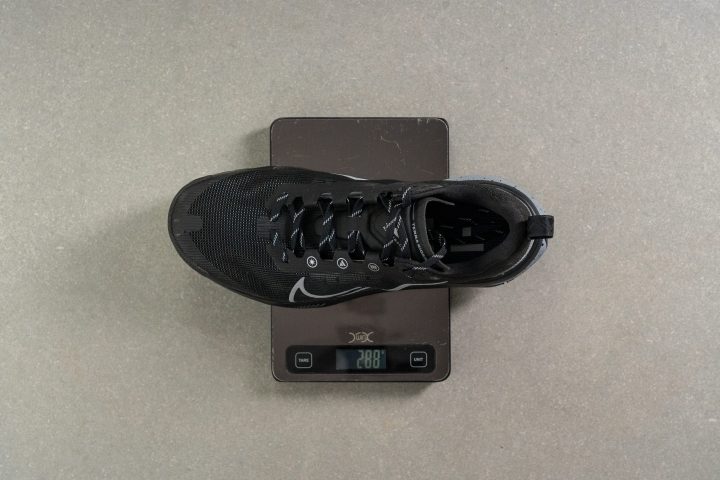
The synthetic mesh uppers also facilitate better breathability. Breathability is critical for trail running shoes because the more a shoe can breathe, the better your feet can ventilate and avoid overheating.
In addition, breathability often translates to quick drying. So even if your shoes get wet while out on the trail, you can expect them to dry quickly when given the opportunity.
Plush EVA foam midsoles
Shock absorption is critical for trail running shoes. Regarding shoe construction, one of the big players in charge of shock absorption is the midsole. Nike trail running shoes come with a super comfy, dare we say “plush”, EVA foam midsole.
All of our recently tested trail shoes from Nike proved to be much softer than average. Some of them were even 80%(!) softer than average!! We found them to be exceptionally comfortable for both long-distance running and hiking.
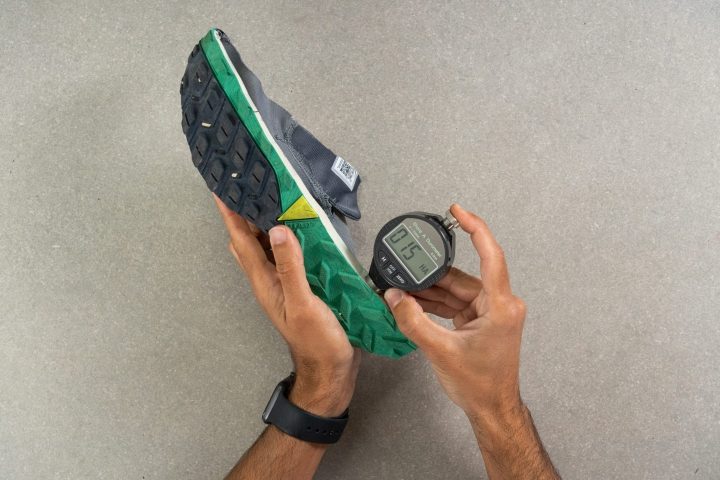
Rock plates in the midsole
Nike trail running shoes don’t only feature high-quality cushioning for shock absorption. In addition to the EVA foam midsole, some of their trail running shoes also feature rock plates.
For example, the Wildhorse 8 and the ZoomX Zegama Trail all feature integrated rock plates in the midsole area of the shoe.
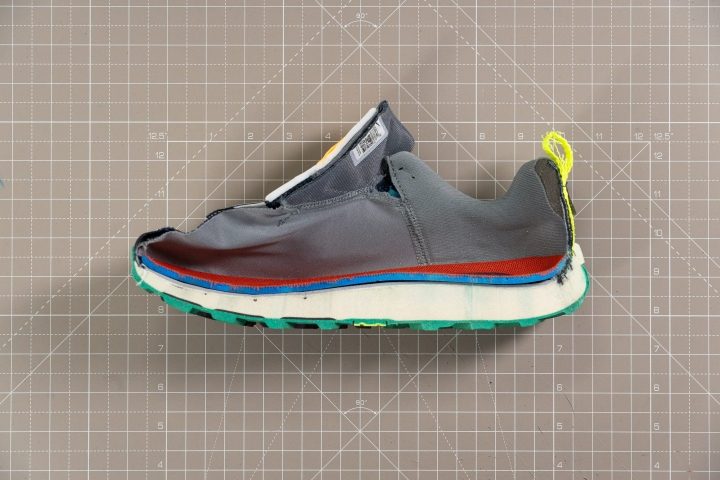
Rock plates are a super helpful addition to trail running shoes. They add support and stability to the shoe. As well as help protect your feet from sharp objects on the trail, like roots and rocks.
So if you don't mind adding a little bit of weight to get more protection, we recommend a Nike trail running shoe with a rock plate.
Grippy outsoles
Traction is one of the most important considerations when it comes to trail running shoes. Therefore, it goes without saying that Nike trail running shoes come with grippy outsoles.

Depending on the model, you will find that the lug depth on Nike trail shoes varies from 3 to 4.5 mm. Choose deeper treads for muddy and slushy terrain and go for thinner ones if you transition from road to trail a lot.
